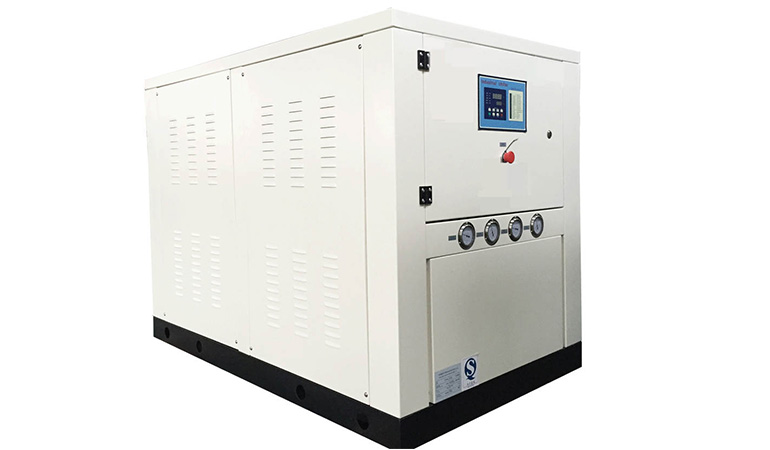The chiller by its nature is a versatile machine that removes the liquid vapour through a compression or heat absorption refrigeration cycle. The vapour compression chiller consists of four main components in the form of a vapour compression refrigeration cycle compressor, evaporator, condenser, part of the metering unit thus realising the different refrigerants. Absorption chillers utilise water as the refrigerant and rely on a strong affinity between the water and the lithium bromide solution to achieve a cooling effect.
Uses of chillers
Chillers are generally used in air conditioning units and industrial cooling. In air conditioning systems, chilled water is typically distributed to heat exchangers or coils in air handling units or other types of terminal equipment for cooling in their respective spaces, and then the chilled water is redistributed back to the cooling being cooled off. In industrial applications, chilled water or other liquids are pumped through the process or laboratory equipment. Industrial chillers are used to control products, mechanisms and plant machinery for cooling in a variety of industries.

Classification of chillers
Chillers are generally classified as water-cooled or air-cooled according to the form of refrigeration. Technically, water-cooled is 300 to 500 kcal/h more energy efficient than air-cooled; in terms of price, water-cooled is much lower than air-cooled; in terms of installation, water-cooled needs to be incorporated into a cooling tower before it can be used, while air-cooled is movable and requires no other assistance, but air-cooled chillers dissipate heat only by means of a fan and have environmental requirements: for example, ventilation, humidity, temperature cannot be higher than 40°C, air pH value.
Air-cooled chillers use a shell and tube evaporator to exchange water with the refrigerant. The refrigerant system absorbs the heat load in the water, cooling the water to produce cold water, which is then brought to the finned condenser by the compressor and dissipated to the outside air by the cooling fan (air cooling).
Water-cooled chillers use a shell and tube evaporator to make a heat exchange between the water and the refrigerant. After the refrigerant system absorbs the heat load in the water to cool down the water to produce cold water, the heat is brought to the shell and tube condenser through the action of the compressor, and the heat is exchanged between the refrigerant and the water so that the water absorbs the heat and then is dissipated through the water pipe to the external cooling tower.
At the beginning, the low temperature and low pressure refrigerant gas is inhaled by the compressor after evaporating and cooling, then compressed into high temperature and high pressure gas and sent to the condenser; the high pressure and high temperature gas is cooled by the condenser and the gas is condensed into normal temperature and high pressure liquid; when the normal temperature and high pressure liquid flows into the thermal expansion valve, it is throttled into low temperature and low pressure wet vapour and flows into the shell and tube evaporator, which absorbs the heat of the chilled water in the evaporator to make the water temperature drop; the evaporated refrigerant is then sucked back into the compressor and the next refrigeration cycle is repeated, thus realising the purpose of refrigeration.
Box Type Water-Cooled Chiller
This Box Type Water-Cooled Chiller has remarkable features that any ideal water-cooled chiller must bear. It has an edge over many other chillers due to its economical consumption of electricity. As the name says water-cooled, the condenser has waterside for extra cooling. It also has high and low voltage protection, over current protection, and electronic time-delay protection. It displays an outstanding example of efficiency side by side less space occupation.
